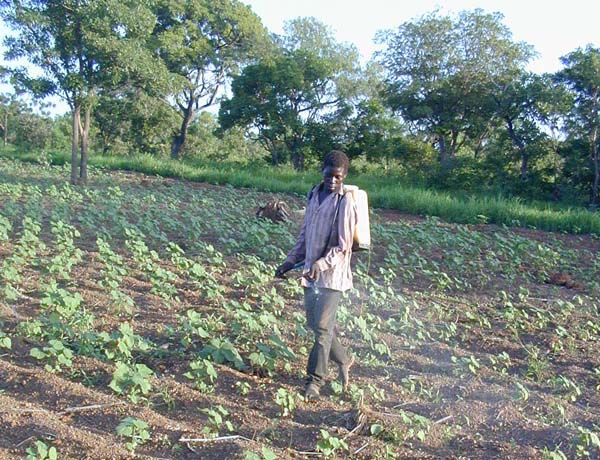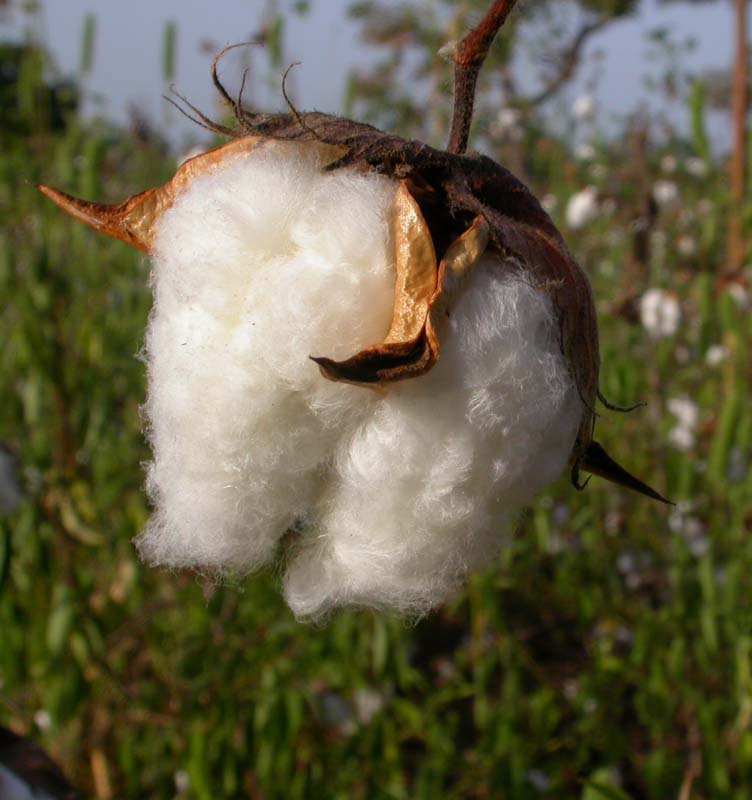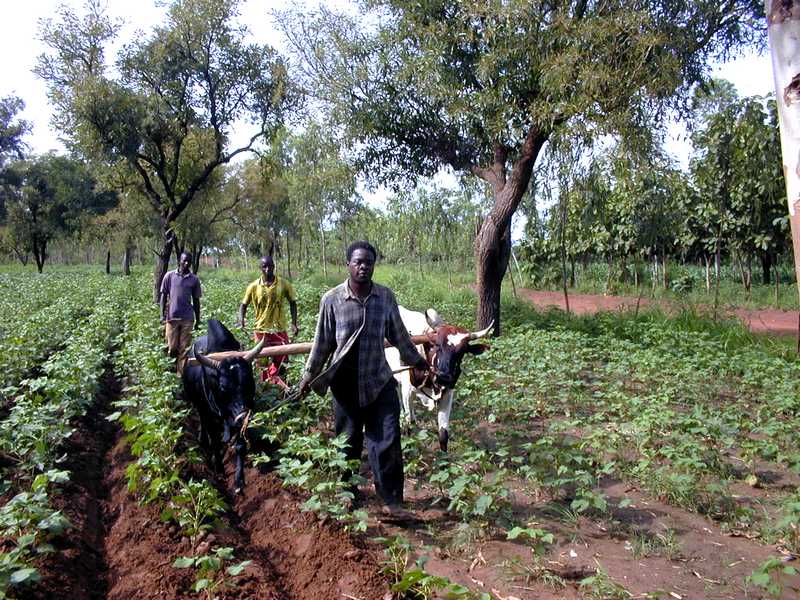”Either we get 300 francs per kg or we stop growing cotton”
On March 22nd the Association of operators in cotton production and trade (Association interprofessionnelle du coton du Burkina, AICB) set the price for prime quality seed cotton, at the field, at 245 CFA francs/kg and second grade cotton at 220 francs/kg. Agreement on these prices is fare from unanimous! Many cotton farmers find them totally insufficient and say so! This is the case with a great number of producers of cotton in the Banfora region, who are demanding 500 francs/kg for prime quality seed cotton. This is also the opinion of the Provincial Union of cotton producers in Houet (part of the Bobo Dioulasso region).
”Either we get 300 francs per kg or we stop growing cotton”
This is what the producers declare, according to Séri Aymard BOGNINI in L’EXPRESS DU FASO of April 25th. The author continues:

 « The news of the proposed price increment per kg cotton, at a time when the price of inputs is also going up, was not well received by the Provincial Union of Producers of Houet. Immediately after the announcement the Union held an extraordinary general meeting on April 19th to make its position known. A price of 245 CFA francs per kg cotton is ”very low”. Participants demand an increase to 300 francs, while the proposed price for inputs is to remain unchanged. In 2004-2005 the world market price for fibre cotton was around 820 francs/kg and the price paid to producers for seed cotton was 210 francs. In 2007-2008 it was 620 francs and we received 155. Today the world market price is around 2000 francs and they want to give us 245 per kg, that is not possible” the Union president stated. “At a time when all the talk is about the strong position of cotton on the world market, it is unacceptable to make us such an offer”, he added.
« The news of the proposed price increment per kg cotton, at a time when the price of inputs is also going up, was not well received by the Provincial Union of Producers of Houet. Immediately after the announcement the Union held an extraordinary general meeting on April 19th to make its position known. A price of 245 CFA francs per kg cotton is ”very low”. Participants demand an increase to 300 francs, while the proposed price for inputs is to remain unchanged. In 2004-2005 the world market price for fibre cotton was around 820 francs/kg and the price paid to producers for seed cotton was 210 francs. In 2007-2008 it was 620 francs and we received 155. Today the world market price is around 2000 francs and they want to give us 245 per kg, that is not possible” the Union president stated. “At a time when all the talk is about the strong position of cotton on the world market, it is unacceptable to make us such an offer”, he added.
”Producers have decided to show their disagreement in various ways. At present we are about to have all cotton producers sign a petition. If we are not understood, we will boycott production by reducing cultivation areas or stopping to grow cotton altogether”, the Union president, Mr Ouattara explained. “The idea of organising a demonstration has been brewing, but we felt that our country has seen enough of loud demonstrations. Therefore we have decided to demonstrate on our land, leaving it to each farmer to decide which way suits him best”, the president said before concluding:”We have stood by the cotton companies enough, now we too want to benefit from the bright market situation.”
I personally find the Houet cotton producers’ reaction fully justified. I would even go further. As far as I know the cotton world market prices have never been as high. If the cotton companies are unable to offer the producers of Burkina a good profit, it is time they prepare to abandon cotton cultivation.

 In the same newspaper article we read:« ”According to a technician, considering the type of cotton (traditional or genetically modified – GMO) a farmer who produces 1200 kg traditional cotton per hectare and who follows the required technical input management, can earn a net profit of 53 313 CFA francs. If the same farmer produces GMO cotton, with a minimum of technical inputs and a yield of 1 560 kg, his net earnings will be 78 165 CFA francs. The more he is able to produce, the more his profits will go up. This means that in order to make good business in cotton, producers should pay particular attention to and a high yield. In any case, it seems that the price of cotton is always geared to the benefit of the producer.” »This technician does not know what he is talking about. How could he possibly declare that a price (for seed cotton) which brings in 50 000 to 80 000 francs for one hectare is ”a price that benefits the producer?” I seriously doubt that he has ever cultivated one single hectare in his life..
In the same newspaper article we read:« ”According to a technician, considering the type of cotton (traditional or genetically modified – GMO) a farmer who produces 1200 kg traditional cotton per hectare and who follows the required technical input management, can earn a net profit of 53 313 CFA francs. If the same farmer produces GMO cotton, with a minimum of technical inputs and a yield of 1 560 kg, his net earnings will be 78 165 CFA francs. The more he is able to produce, the more his profits will go up. This means that in order to make good business in cotton, producers should pay particular attention to and a high yield. In any case, it seems that the price of cotton is always geared to the benefit of the producer.” »This technician does not know what he is talking about. How could he possibly declare that a price (for seed cotton) which brings in 50 000 to 80 000 francs for one hectare is ”a price that benefits the producer?” I seriously doubt that he has ever cultivated one single hectare in his life..
In writing this I come to think of a farmer friend. He lives in a village in the Houet county where everybody grows cotton. Except him. He stopped many years ago. He found the yield per hectare too low, in particular with regard to all the labour needed. The harvest for instance may go on until the month of February. But then his eldest son, growing up and seeing all his friends growing cotton, he wanted to do the same. At first his father refused. But as the son insisted, he said: ”All right, we are going to do cotton this year. But we shall keep record of all the work we need to do, the time and labour and, of course, all the money spent. When finally we have been paid we shall sit down and draw up the result. And then we shall decide whether to continue or to stop.” And that is what they did. In the end, when the results were there, the son said: ”Father, you were right. Next year we shall no longer be growing cotton.”

 It was this same farmer who told me that for many years now he has been growing soy. Even if he does not put in fertiliser he will harvest 10 bags of 100 kg. He will sell them for 15 000/bag at the harvest, if he is in urgent need of cash, or 30 000 if he can wait for a few months. Given that he needs to use 30 kg of seed per hectare, his net earning per hectare of soy is 145 000 to 295 000.Compare this « with the 53 313 to 78 165 francs>> for cotton. And this for work that is much less strenuous and for a crop that enriches the soil in nitrate (soy being an oil seed plant).
It was this same farmer who told me that for many years now he has been growing soy. Even if he does not put in fertiliser he will harvest 10 bags of 100 kg. He will sell them for 15 000/bag at the harvest, if he is in urgent need of cash, or 30 000 if he can wait for a few months. Given that he needs to use 30 kg of seed per hectare, his net earning per hectare of soy is 145 000 to 295 000.Compare this « with the 53 313 to 78 165 francs>> for cotton. And this for work that is much less strenuous and for a crop that enriches the soil in nitrate (soy being an oil seed plant).
If I have one piece of advice to give all cotton farmers who have decided to reduce or even abandon cotton cultivation, it is ”switch to soy”. In Burkina there is an growing market for soy. Livestock herders are now realising that soy is better than oil seed cake as an animal feed supplement. Moreover soy ought to be given preferential treatment in a rational crop rotation system.
Paris, May 8th 2011
Maurice Oudet
Director, SEDELAN









